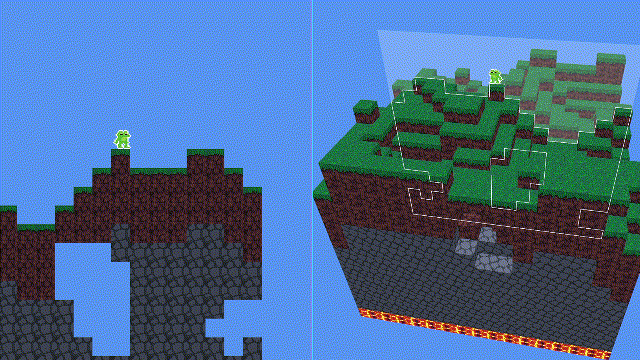
By way of figuring out whether I’ve got the bones of an actual essay, I want to talk through a weird turn of phrase I’ve seen a lot around discussions of VR — particularly laymen discussions of VR. It’s the idea that the virtual future we’re about to enter into is “4D.” Journalists often describe (I will use this word exactly once, and here it is) the metaverse as fourth dimensional.
Disclaimer that I am also a layman when it comes to VR. Disclaimer that I actively do not want to criticize laymen descriptions of things. But where does this language of dimensionality come from? Is it just a sci-fi synonym of “futuristic,” or do these writers have something else in mind?
To start, let’s talk about dimensionality. “Dimensions” come to us from topology, a field of mathematics that studies geometric objects. Specifically, it studies objects as they transform without breaking, puncturing, gluing, or sewing. Specifically, topology defines objects as pieces of dough or clay, that you can stretch and mold however you want, but that you can never tear up. A donut is different from a flat sheet, but not different from a drinking straw. Topologically. To be honest I’ve never found an easy description of topology.
Dimensionality appears in all kinds of fields, though. You’ve probably heard that the fourth dimension is time. What that means is that, if you were mapping the world on a coordinate grid, you could cover every point with a unique three-number code — but you would need a fourth number, a fourth dimension, to also indicate every point of the world at any point in time. I live at x latitude, y longitude, z elevation, and w time. This is a really classic use of dimensions.
As with literally every concept in math, dimensions are abstract. They don’t have to be used for anything. That’s what all the letters are for: they’re understudies for whatever ends up being useful. Fourth-dimensionality describes any conceptual space that can be defined along four axes. Your opinions on burgers, hot dogs, tacos, and french fries can be plotted in four-space (that is, in 4D). The Rotten Tomatoes audience scores for the Twilight tetralogy are (72, 61, 60, 65) if you average Breaking Dawn parts 1 and 2. The scores for Diary of a Wimpy Kid are (49, 62, 63, 30). You can plot the quality of a tetralogy in 4D.
Why do people mostly focus on dimensions of spacetime? Because it’s more interesitng to know how we should describe the universe than it is to know the quality of Diary of a Wimpy Kid movies. (Barely.) Milo Beckman writes in Math Without Numbers that researchers have a legendarily difficult time finding all of the unique shapes in four-space, despite the fact that it’s probably the best way to describe the real cosmos.
It’s not just that we don’t know the shape of the universe — until we finish classifying the four-manifolds, the universe might just be a shape we haven’t thought of yet.
None of this gets us any closer to knowing why VR apparently feels like a fourth dimension, on some instinctive level. Disregard time, and virtual environments are still modeling three-dimensional space by projecting it onto two-dimensional screens. You could assign a binary value in the fourth dimension — “blink once if you’re in the real world, blink twice if you’re in the virtual world.”
Here’s my best guess: Every virtual world simulates a 3D world. It simulates our world. Even the Matrix (which we are a far cry from) simulates the real world. While in one of these virtual worlds, you’re never very far from other virtual worlds. I imagine it like the Construct. You can enter it from anywhere, and load in anywhere. In that way, it overlaps the 3D simulation. Mashpoe’s 4D Minecraft is a more niche, but much better comparison.
Virtual reality isn’t just a world, but its own solar system of worlds that you can hop between at will. I’m generally skeptical about VR — I don’t think it will ever get to the fidelity of actual reality — but one thing it does well is collapse distance. Which is exactly what higher dimensions are about.
Uh, thanks for coming along on this journey with me. I hope you found it a little interesting. I definitely didn’t have an answer to my own question when I hit “new post.” At the very least, I hope you find topology as mind-bendy as I do. Now you can enjoy a scholarly chuckle to some jokes by mathematicians.